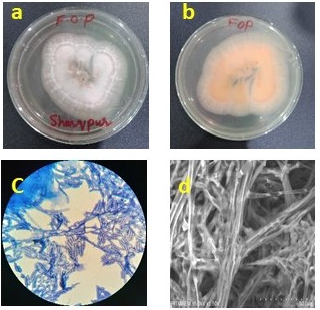Revista Mexicana de Ingeniería Química, Vol. 20, No. 3 (2021), Bio2475
Fungal isolates of genus Trichoderma induce wilt resistance to pea caused by Fusarium oxysporum f. sp. pisi through competitive inhibition
|
S. Nawaz, M.N. Subhani, M.B. Chattha, Y. Saleem, S.H. Abidi, K. Shahzad, S. Saeed, Q. Syed, M. Irfan, A. Ambreen
https://doi.org/10.24275/rmiq/Bio2475
Abstract
 |
|
Four different Trichoderma species were isolated from the soil rhizosphere of pea field from selected areas of Punjab, Pakistan. Based on morphological and cultural characteristics species were recognized as T. harzianum, T, viridae, T. hamatum and T. koningii. The isolated species were screened for the production of extracellular hydrolytic enzymes. The strains were found positive for chitinase and glucanase activities. Fusarium oxysporum f. sp. pisi was isolated from roots of wilted pea plants. In-vitro biocontrol potential of the isolated Trichoderma species was assayed by dual culture technique against Fusarium oxysporum f. sp pisi. The maximum growth inhibition was observed by T. viridae (76.42%) followed by T. harzianum (74.29%), T. koningii (71.43%) and T. hamatum (69.64%), after 7 days of incubation. All four isolated species of Trichoderma were used in confrontational assay against Fusarium oxysporum pisi (FOP). A competition of Trichoderma sp. v/s FOP was evident, all Trichoderma strains showed strong antagonistic activity that was clearly observed on dual culture agar plates and further confirmed under scanning electron microscopy (SEM). Pot experiments also confirmed a very strong competitive inhibition of FOP evidently due to presence of glucanase and chitinases in Trichoderma spp. The primary screening and basic findings of present work will be helpful to obtain an efficient and novel biocontrol agent for further experimental trials on pea plants and may also enhance the chance of using Trichoderma species in integrated disease management (IDM) programs as an effective biological agent against several phyto-pathogens.
Keywords: Trichoderma Antagonistic effect, FOP, biocontrol potential, SEM.
|
|
 |

